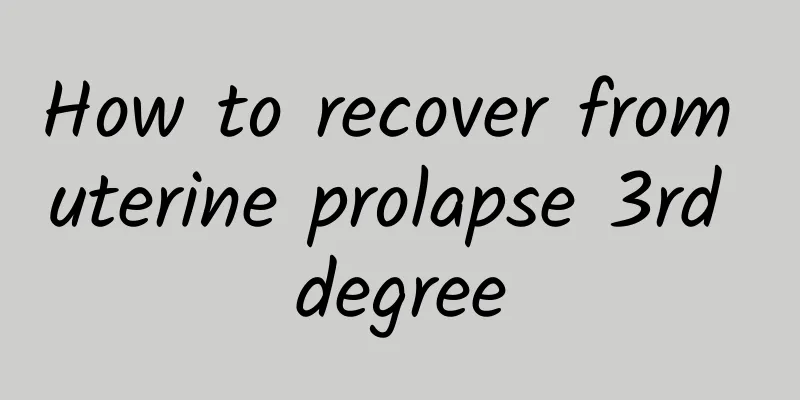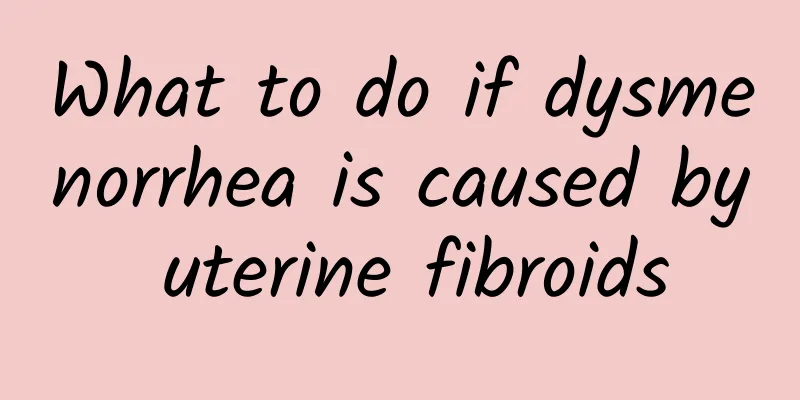How to recover from uterine prolapse 3rd degree

|
How to recover from 3rd degree uterine prolapse? Uterine prolapse is a common gynecological disease in women, mostly occurring in menopausal and elderly women. Patients with mild uterine prolapse generally have no clinical symptoms and will not cause much harm to the patient, but if the uterine prolapse reaches the third degree, it is relatively serious, and the entire uterus and cervix have been separated from the vaginal opening, causing greater harm to women. 1. Surgery to strengthen the pelvic fascia support This surgery is for young patients with no pathological changes in the cervix. It effectively improves symptoms by repairing the anterior and posterior walls of the vagina, such as anterior and posterior vaginal wall repair, ligament suspension surgery, partial cervical resection, and shortening of the main ligament. However, during the treatment, patients need to pay attention to personal hygiene to avoid infection that worsens the condition. The possibility of recurrence in the anterior and posterior vaginal wall repair surgery is relatively high. 2. Vaginal closure is a surgery mainly for the elderly who have no requirements for sex life and cannot tolerate larger surgeries. Then combined with various internal diseases, it will cause more bleeding and larger wounds. If it is not recommended for young patients, this surgery will cause loss of sexual function. 3. Total hysterectomy is a treatment for very serious patients, such as uterine prolapse accompanied by cervical hyperplasia, and more serious functional bleeding symptoms. Patients are usually recommended to use this treatment method, but they still need to pay attention to personal hygiene after treatment to avoid infection. Uterine prolapse of degree 3 is very serious, and will affect the patient's vulvar ulcers, increased secretions and bleeding. At the same time, there will be friction pain when walking, a significant sense of lower abdomen, and lumbar pain after labor. Once uterine prolapse occurs, it needs timely treatment. If it is early stage 1 of uterine prolapse, surgical treatment is not required, and it can be restored to normal through pelvic floor function training treatment. |
<<: Symptoms of pelvic inflammatory disease and cervicitis
>>: Can ovarian cysts cause abdominal pain?
Recommend
Can you get pregnant with cervical erosion?
Can you get pregnant with cervical erosion? 1. Ce...
Did you know that chronic pelvic inflammatory disease can lead to ectopic pregnancy?
Can chronic pelvic inflammatory disease lead to e...
Can I eat green peppers if I have vaginitis?
Patients with vaginitis can usually eat sweet gre...
What causes Bartholinitis?
Bartholinitis is a common inflammation of the fem...
Experts tell you how to take care of vulvar leukoplakia in daily life.
Recently, some friends do not know how to take ca...
What are the precautions for postpartum confinement after miscarriage? Pay attention to these 4 points
Some women, due to various reasons, cannot allow ...
Treatment of infertility after abortion with oligomenorrhea
Two years ago, Ms. Zhu had an abortion at the age...
Are there any side effects of taking Xiaoyao Pills during menopause?
It is not necessarily appropriate for menopausal ...
Long-term dysmenorrhea may be caused by endometriosis
Endometriosis is a common gynecological disease. ...
Learn to get rid of these causes of irregular menstruation
Female friends are originally feminine, and they ...
How to distinguish between vulvar leukoplakia and vulvar eczema
How to differentiate between vulvar leukoplakia a...
You have vulvar leukoplakia and itching.
Vulvar leukoplakia is a progressive disease. It w...
What are the treatments for female cervical erosion? How long does it take for female cervical erosion to be cured?
What are the treatments for cervical erosion? Cer...
Are there any unexpected benefits for women with apple-shaped butts? Occupational therapist teaches: 4 exercises to slim your butt
Although women may not be satisfied with their bi...
Can abortion be performed with medical treatment after incisional pregnancy? Let’s take a look
Incisional pregnancy, also known as cesarean scar...









